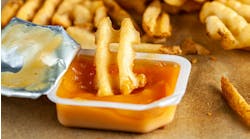Ultra-processed foods (UPFs) were first described a decade ago. An uptick in science and news coverage in 2022-2023 has brought new energy to the topic. UPFs are being explored in the 2025-2030 U.S. Dietary Guidelines process (USDA, 2023) and the concept behind them is under vigorous debate.
But is this concept ready for North American policy – or is more science needed to support formally incorporating the concept of UPF into existing tools and guidance?
Recent UPF stories have appeared in the Washington Post, New York Times, National Public Radio, and other outlets. Stories vary in their certainty about what UPFs are and their impact on health.
Among scientists, the dialogue is marked by controversy and debate. But diverse perspectives are important to capture when policy is on the line, because policies founded in reliable science have the best chance of impacting public health.
The concept of “ultra-processed foods” was posed by Dr. Carlos Montiero of the University of São Paulo in 2010 (Montiero et al., 2010) under the food classification scheme called NOVA (not an acronym). “UPF,” or Category 4 of NOVA in Montiero’s definition, has evolved over time and most recently refers to “industrial formulations that are made with multiple industrial ingredients extracted from foods or synthesized in laboratories” (Livingston et al. 2021).
UPFs include foods with preservatives, low- and no-calorie sweeteners, emulsifiers or other additives, and may be made with processes such as extrusion, molding, hydrogenation or hydroxylation, as examples.
But perhaps caution, or at least a pause, is merited in associating these processes to adverse health outcomes. There is actually very little evidence linking extrusion, molding, hydrogenation, hydroxylation or other processes to a uniformly negative nutrition or health impact.
Processing vs. formulation
Starting with definitions, the NOVA UPF description includes mechanisms (processes) by which the food is made and the “recipe” (ingredients) — among other characteristics. A recent workshop organized by the Institute for the Advancement of Food and Nutrition Sciences (IAFNS) — which included diverse perspectives from government, industry and academia — concluded that processing and formulation are distinct food characteristics. Both need to be evaluated to see if and how they impact health in different ways.
One food might be “highly” processed, but contain no added ingredients such as textured vegetable protein (TVP). Of course, one typically adds something to TVP when cooked at home to enhance flavor. Home-cooked foods are not considered ultra-processed. Other less “processed” foods have an added ingredient that “makes” that food a UPF such as Greek yogurt with a low-calorie sweetener.
The idea here is that the UPF category encompasses a broad array of foods. As more research emerges, the diversity of the UPF category may merit additional investigation and possible disaggregation. Only in this way can we clarify if and how specific food characteristics are linked to adverse health outcomes.
One might argue that these details are digging around the margins. However, if UPF guidance is extended, work on these nuances will be increasingly important.
Julie Hess and colleagues at USDA Grand Forks created a diet that aligns with the current Dietary Guidelines for Americans and contains more than 90% of calories from UPFs (Hess et al. 2023). At the same time, the oft-cited and only randomized controlled trial showed that subjects consuming an ad-lib UPF vs. an ad-lib unprocessed diet with matched nutrients consumed more energy and gained weight (Hall et al. 2019). This suggests that more work is needed to ensure that dietary guidance and tools to support improved food choices drive toward a common goal.
In addition to some ingredients and processes, “ultra” is distinguished by the characteristics of being “highly convenient,” “highly attractive (hyperpalatable)” and “highly profitable” (Monteiro et al. 2019). Expert consensus on how to measure these qualities is not available, introducing additional subjectivity in the use of NOVA.
There is also evidence that the placement of foods into NOVA categories varies depending upon an individual’s decisions (Braesco et al. 2022). In one published correction, a set of scientists noted that common mixed dishes had to be manually re-categorized “in collaboration with Dr. Carlos Monteiro” (Mozaffarian et al. 2022).
To address possible misclassification, two author groups recently released guidance and best practices for food categorization using NOVA (Steele et al. 2022, Steele et al. 2023). Going forward, these documents might better harmonize the way researchers approach assigning foods. This guidance appears only after a decade of news articles and published studies linking UPFs to health outcomes.
Some might argue that application of this guidance does not shift the preponderance of information identifying adverse health outcomes – but perhaps application of this new guidance will bring more clarity on specific pathways.
Diverse effects
Biological plausibility means that a detected relationship is consistent with existing knowledge (Oxford University Press, 2023). In observational research, UPF-containing diets have been correlated with obesity, cancer, cardiovascular disease, diabetes, chronic kidney disease, impaired bone growth and other outcomes. These conditions are diverse and complex in origin. Further understanding the links between UPF, the specific components, and physiological mechanisms that potentially lead to adverse outcomes may be important to clarify.
More broadly, some may not be aware that there are at least five other food classification schemes (see for example Pereira de Araujo et al. 2022). Among its peers, NOVA is the only scheme that uses “UPF” as a category and has become recognized in research and policy.
In several Latin American countries, the concept of UPF is less news and has already shifted into policy with marketing restrictions to children and other measures. It also has entered the U.S. Dietary Guidelines Advisory Committee (DGAC) process, which confirmed in May a plan to explore the evidence base related to UPF and weight (USDA, 2023). This committee stated that it’s aware of at least seven different classification schemes, and it will review the literature to understand how UPF is defined in research studies.
The food supply is complex and ever-changing, and this dynamism can be challenging to capture with simple classifications. No one argues that food processing has value for food safety and other protections. It’s the “ultra” prefix that leads to debate and some uncertainty about what is being evaluated.
Despite these questions, stakeholders at the recent IAFNS Workshop agreed that any food classification system should support consumption of healthy, affordable and accessible foods and align with dietary guidance. This includes those systems based on “nutrients to limit,” processing, formulation or other approaches.
Finally, we should remember as leaders, researchers and policy makers that consumers are the key end-users of foods. Food product development and guidance tools impacted by food classification or categorization policies need clear messaging to change behavior for the better. To this point, researchers, food developers and policymakers can likely all agree.


